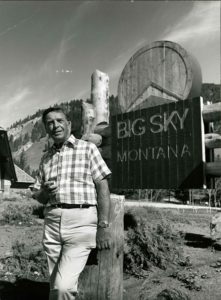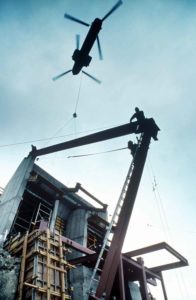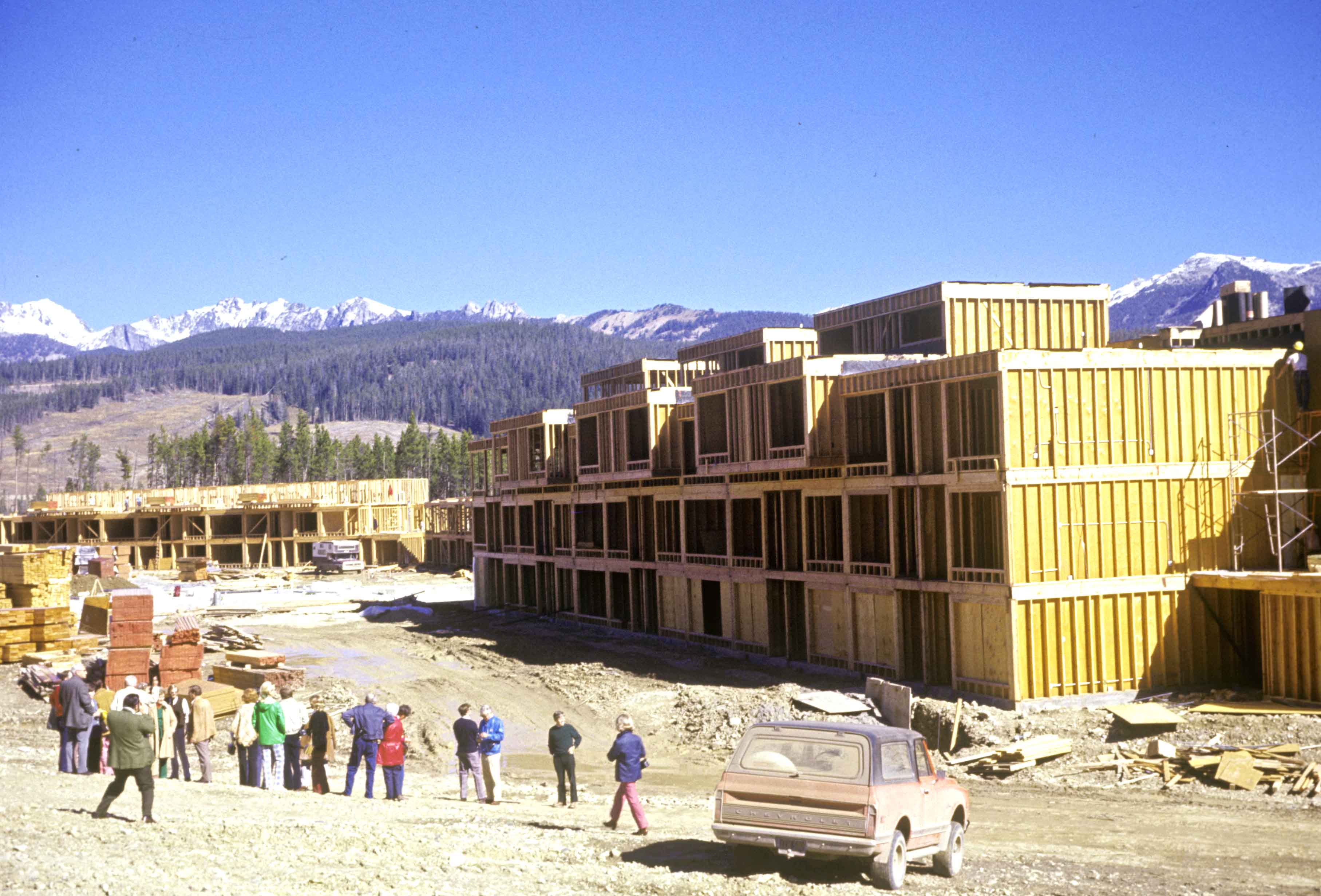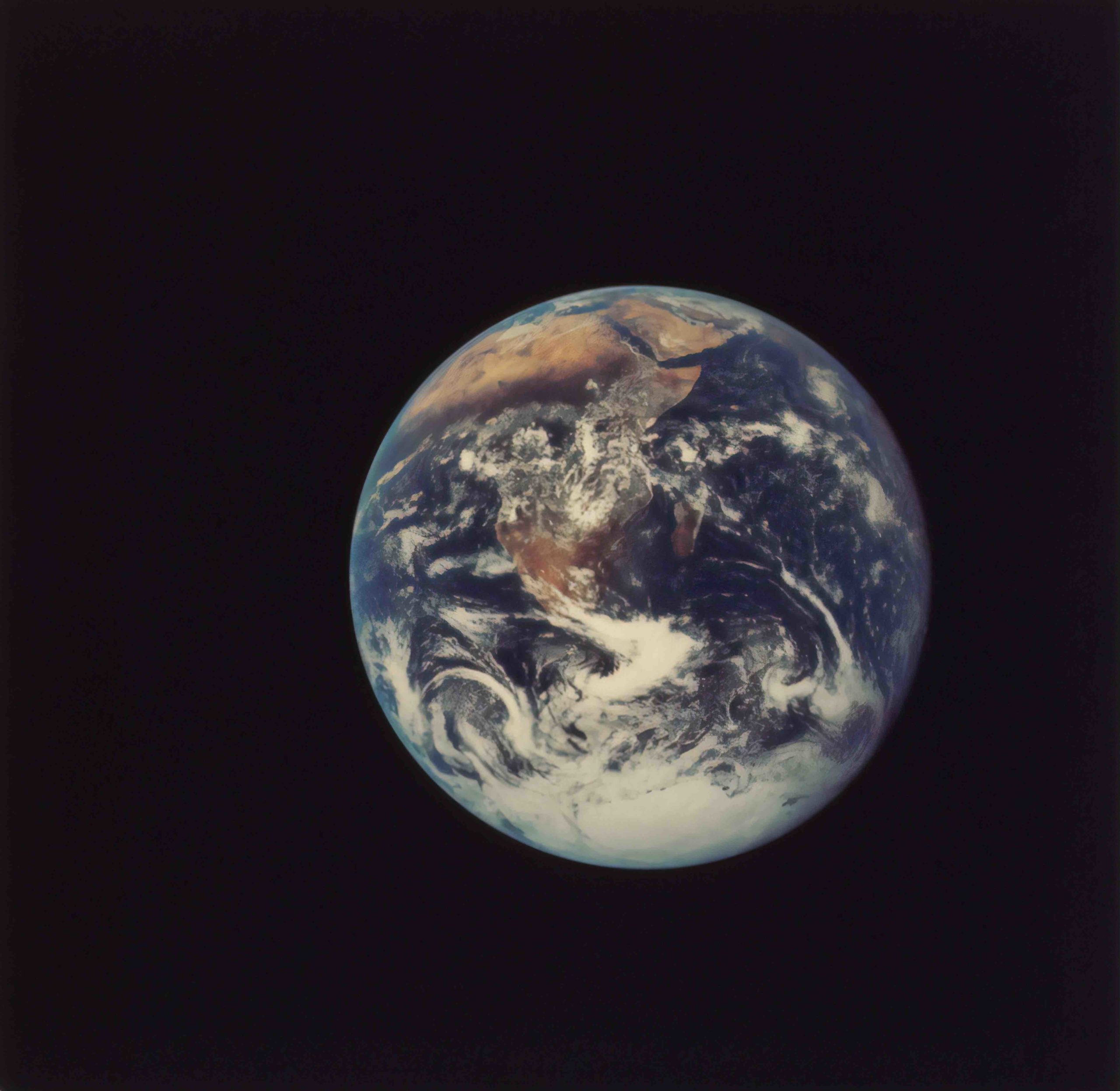Big Sky Resort, tucked among the wild peaks of southwest Montana, began with NBC News anchor Chet Huntley’s dream of “if you build it, they will come” in 1973 and is now attracting visitors and second homeowners in droves. Today, Big Sky epitomizes the modern Wild West as developers are betting big money, to the tune of $1 billion by some accounts, that it will be the world’s next great destination resort community, while its full-time residents hang on for the ride.
In this five-part series, Jackson, Wyoming-based writer Brigid Mander and Explore Big Sky staff interviewed nearly 100 sources to chart the development history of a community that sprouted at the base of a ski area—unusual for Western resorts that typically began as mining or railroad towns where ski infrastructure followed.
This series will take readers through the unorthodox development history of Big Sky, from Huntley’s big idea in the ‘70s; Boyne Resort’s purchase of the resort after Huntley’s untimely death; Tim Blixseth’s acquisition of large swaths of land around Big Sky Resort and his founding of the private Yellowstone Club; financial ruin of three large resorts during the Great Recession and CrossHarbor Capital Partners’ acquisition of them in bankruptcy court; and the explosive development, challenges and opportunities happening here today.
At the core of the community is an iconic, towering peak that’s been drawing snow speculators for more than four decades. – EBS Staff
Read part one here.
Part 2: Chet Huntley’s dream is nearly extinguished, Boyne reignites torch with Lone Peak Tram
By Brigid Mander EBS Contributor
Some people did, in fact, think Chet Huntley’s original idea was a big deal. One of the first national headlines the future Big Sky garnered was in a 1971 article in The New York Times that read: “Resort Plan Sparks Montana Controversy.”
The dispute was mainly focused on public land being sold to private companies, and carving a ski resort from what environmentalists and foresters of the day said were environmentally sensitive lands near Yellowstone National Park and designated wilderness areas. The parcels that were sold to the project were small and checker-boarded among existing private lands. The opposition made no inroads and the plan was approved.
In theory, Big Sky represented Chet Huntley’s enthusiasm for showcasing his home state’s beauty, and he was sure it could provide a skier’s paradise to rival Sun Valley, Idaho, or Aspen, Colorado. Famously, he told lawmakers and the public that a world-class ski area could be the best thing that ever happened to Montana.
“[Tourists] come and spend their money, leave a few tracks in the snow and go back home. What’s so wrong with that?” Huntley reasoned with critics.

“His love of the land was very strong. It never left him, no matter where he lived or how famous he became,” said his daughter Sharon Kahn. “He wanted to bring a clean industry and dollars [i.e., tourists] to Montana, and for people to come discover what he loved.” Unfortunately, Huntley did not live to see, or have a say, in much of his dream: he died of cancer in March of 1974, four months after Big Sky Resort opened to skiers.
Boyne Resorts
The consortium of businesses, led by Chrysler Realty—a wholly owned subsidiary of Chrysler Corporation—that Huntley put together to fund the new ski resort didn’t have the patience to see the project out of its infancy. By the winter of 1975-1976 it was hemorrhaging money and on the market when Boyne Resorts, founded by Everett Kircher, bought the operation—which had seen about 70,000 skier visits a winter so far—for approximately $8.5 million.
The ski area continued to lose money, but less so under the experienced resort operator, and skier visits kept increasing. A small community began to grow, attracted by recreation opportunities and employment with Big Sky Resort. Boyne, which owns about 10 other profitable resorts and ski areas around the country, was able to infuse their struggling outpost with cash lifelines to keep it going for years. Big Sky Resort broke even for the first time in 1980, and by 1990 the ski resort was in the black.
Boyne spent plenty of time and money over the first decade or so facing significant projects to clean up the hastily built base area, condo projects and general infrastructure. “There were a lot of challenges,” says Stephen Kircher, Everett’s son and current president of Boyne Resorts, noting the Deer Lodge condo complex that had to be destroyed and many lawsuits from original owners who bought from Chrysler Realty.
The water and sewer issues got so bad that in 1993 the Montana Department of Environmental Quality issued a sewer hook-up moratorium—effectively a building moratorium—that lasted about five years.

Measuring out improvements with money from its other resorts, Boyne catapulted the resort to a new realm in the ski world in the winter of 1995-1996, with the addition of a tram to the top of Lone Mountain that accessed legitimate expert terrain. Major media outlets and ski magazines began to take note, and welcome positive press rolled in for Big Sky.
resort to a new realm in the ski world in the winter of 1995-1996, with the addition of a tram to the top of Lone Mountain that accessed legitimate expert terrain. Major media outlets and ski magazines began to take note, and welcome positive press rolled in for Big Sky.
Read the third installment in this series “The Great Recession hits Big Sky hard, CrossHarbor buys in for pennies on the dollar” in the July 21 edition of EBS.













